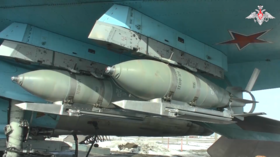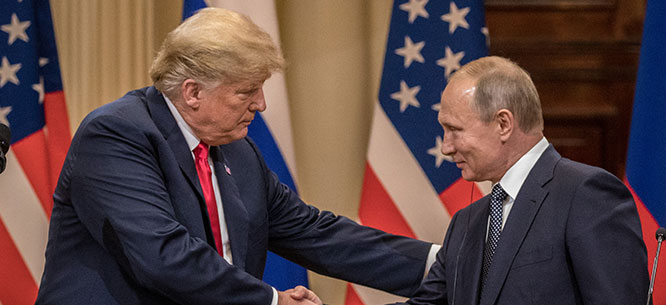
Russians began voting on the first day of a three-day presidential election that President Vladimir Putin is all but certain to win, extending his rule by six more years after any serious opponents were barred from running against him amid a brutal crackdown on dissent and the independent media.
The vote, which is not expected to be free and fair, is also the first major election to take place in Russia since Putin launched his full-scale invasion of neighboring Ukraine in February 2022.
Putin, 71, who has been president or prime minister for nearly 25 years, is running against three low-profile politicians — Liberal Democratic Party leader Leonid Slutsky, State Duma Deputy Speaker Vladislav Davankov of the New People party, and State Duma lawmaker Nikolai Kharitonov of the Communist Party — whose policy positions are hardly distinguishable from Putin’s.
Boris Nadezhdin, a 60-year-old anti-war politician, was rejected last month by the Russian Central Election Commission (TsIK) because of what it called invalid support signatures on his application to be registered as a candidate. He appealed, but the TsIk’s decision was upheld by Russia’s Supreme Court.
“Would like to congratulate Vladimir Putin on his landslide victory in the elections starting today,” European Council President Charles Michel wrote in a sarcastic post on X, formerly Twitter. “No opposition. No freedom. No choice.”
The first polling station opened in Russia’s Far East. As the day progresses, voters will cast their ballots at nearly 100,000 polling stations across the country’s 11 time zones, as well as in regions of Ukraine that Moscow illegally annexed.
By around 10 a.m. Moscow time, TsIK said 2.89 percent of the 110 million eligible voters had already cast their ballots. That figure includes those who cast early ballots, TsIK Chairwoman Ella Pamfilova said.
Some people trying to vote online reported problems, but officials said those being told they were in an electronic queue “just need to wait a little or return to voting later.”
There were reports that public sector employees were being urged to vote early on March 15, a directive Stanislav Andreychuk, the co-chairman of the Golos voters’ rights movement, said was aimed at having workers vote “under the watchful eyes of their bosses.”
Ukraine and Western governments have condemned Russia for holding the vote in those Ukrainian regions, calling it illegal.
Results are expected to be announced on March 18.
The outcome, with Putin’s foes in jail, exile, or dead, is not in doubt. In a survey conducted by VTsIOM in early March, 75 percent of the citizens intending to vote said they would cast their ballot for Putin, a former KGB foreign intelligence officer.
The ruthless crackdown that has crippled independent media and human rights groups began before the February 2022 invasion of Ukraine was launched, but it has been ratcheted up since. Almost exactly one month before the polls opened, Putin’s most vocal critic, opposition politician Aleksei Navalny, died in an isolated Arctic prison amid suspicious circumstances as he served sentences seen as politically motivated.
Many observers say Putin warded off even the faintest of challengers to ensure a large margin of victory that he can point to as evidence that Russians back the war in Ukraine and his handling of it.
Most say they have no expectation that the election will be free and fair, with the possibility for independent monitoring very limited. Nadezhdin said he would recruit observers, but it was unclear whether he would be successful given that only registered candidates or state-backed advisory bodies can assign observers to polling stations.
“Who in the world thinks that it will be a real election?” Michael McFaul, the former U.S. ambassador to Moscow, said in an interview with Current Time, the Russian-language network run by RFE/RL, ahead of the vote.
McFaul, speaking in Russian, added that he’s convinced that the administration of U.S. President Joe Biden and other democracies in the world will say that the election did not offer a fair choice, but doubted they will decline to recognize Putin as Russia’s legitimate president.
“I believe that is the right action to take, but I expect that President Biden is not going to say that [Putin] is not a Russian president. And all the other leaders won’t do that either because they want to leave some kind of contact with Putin,” he said.
Before his death, Navalny had hoped to use the vote to demonstrate the public’s discontent with both the war and Putin’s iron-fisted rule. He called on voters to cast their ballots at 12 p.m. on March 17, naming the action Noon Against Putin.
Viral images of long lines forming at this time would indicate the size of the opposition and undermine the landslide result the Kremlin is expected to concoct. The strategy was endorsed by Navalny not long before his death and his widow, Yulia Navalnaya, has promoted it.
“We need to use election day to show that we exist and there are many of us, we are actual, living, real people and we are against Putin…. What to do next is up to you. You can vote for any candidate except Putin. You could ruin your ballot,” Navalnaya said.
How well this strategy will work remains unclear. Moscow’s top law enforcement office warned voters in the Russian capital on March 14 against heeding calls to take part in the action, saying participants face legal punishment.
With reporting by RFE/RL’s Todd Prince, Current Time, and AP
This content originally appeared on News – Radio Free Europe / Radio Liberty and was authored by News – Radio Free Europe / Radio Liberty.
This post was originally published on Radio Free.














